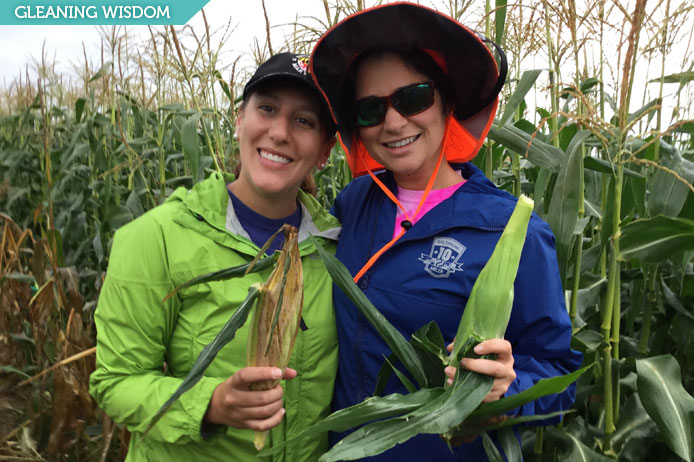Gleaning Wisdom: Managing Logistics

In this third installment of Gleaning Wisdom, Amy explores the logistics of managing dozens of partner farms. The simple fact that farms that grow a variety of produce, much of which peaks at different times of the year, is a challenge on its own. When Mother Nature decides to exert her power and deluge the Eastern Shore with five inches of rain in one day while leaving Baltimore County dry for five weeks, things get even more complicated.
Greetings from a hot, soggy, and muggy Eastern Shore!
I absolutely love serving as the Farm to Food Bank Coordinator for the Maryland Food Bank and am thankful to perform a job that I am so passionate about. That being said, there are a lot of logistics that must be managed to ensure the programs’ continued growth and success. Intertwined within those logistics is the unknown factor called Mother Nature, who has a mind of her own.
You may recall that the program works in one of three ways:
- Farmers call with excess produce we pick up
- When granted permission, we go into farmers’ fields to glean produce using volunteers and pre-release inmates and
- We purchase produce from across Maryland to supplement donations
Unfortunately, due to both Mother Nature and the logistics of farming, my role in the process is completely reactionary.
The Logistics of Freshness
Timing is of the essence in dealing with fresh produce. A block of sweet corn that is good one day, may be too big the next. A peach or apple on a tree will only be good for so long before it becomes over-ripe.
So when I am contacted, gleaning has to happen quickly!
For example, Mason Farms Produce in Queen Anne’s County texted me on a Tuesday requesting a gleaning for Wednesday. Thankfully 15 adults (some of which brought their children) were able to help on short notice. This is why having a large volunteer network is so vitally important to the success of the gleaning program.
Gleaning Logistics
Not all places we glean have the supplies required for a smooth harvest, like pallets, bins, 5/8 bushel baskets, ladders, and/or tractors with forks or forklifts. So I have to figure out how to transport the produce to a location where this type of equipment is available.
Oftentimes that means using our donated F-250 — which holds two pallets — and my friends’ trailer (which also holds two pallets) to haul product to my dad’s shop where there is a tractor with forks. If anyone out there would like to donate a top deck trailer, we could move much more produce from these fields!
How Mother Nature Affects Logistics
Most people think that rain is a good thing for farms. While that is true, the amount of rain that a sometimes fickle Mother Nature decides to deliver can significantly affect gleaning logistics.
With all the recent rain, we’re unable to dig contract potatoes in Southern Maryland because the ground is too wet for the equipment. Yet one of our partner farms in Baltimore County went five weeks without rain.
Famers here on the Shore are watching watermelons succumb to disease due to excess rain. An inch of rain is great, but five inches or more at one time? Not so good.
Last week I worked with a new farm partner in Kent County and with the help of our dedicated volunteers, gleaned eight bins of sweet corn in a downpour. I did not have a single dry spot on my body and when I got home, my rain gauge measured 4.8″ of water in it. But as I said before, it had to be done because the corn would have been too big otherwise.
It’s hot, it’s humid, it’s wet, and it’s been challenging. But we keep going, doing the best we can to provide farm fresh produce to those who need assistance… UNTIL HUNGER ENDS!
About the Author
Amy Cawley has been the coordinator of the Farm to Food Bank Program since 2010. She has a deep passion for agriculture, which fuels her efforts to make sure that every food-insecure Marylander has consistent access to nutritious, fresh produce.
Get updates on our progress in the fight against hunger
Want to see how your involvement directly impacts the well-being of your neighbors in need? Get the latest news sent to your inbox.







Great blog. The more information the better. Most people know something about hunger in the midst of plenty, but many do not know of effective programs like yours.
Thanks for the kind words, Ed!
We’re really proud of the work Amy does with our farm partners.
Ben